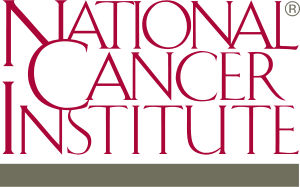Link between homosexuality and Cancer
| Logo of the United States National Cancer Institute, part of the National Institutes of Health. (Photo credit: Wikipedia) |
While there is a dearth of data on cancer survivorship among gay/lesbian/bisexual populations, it has been suggested that these populations generally engage in behaviors that are associated with greater cancer risk. These risk factors include a higher incidence of obesity and alcohol(Drug information on alcohol) consumption among the lesbian population and a higher rate of smoking among gay men, lesbians, and bisexuals. Furthermore, recent studies have shown that same-sex sexual contact is linked to a higher incidence of head and neck and anal cancers. However, the question of cancer survivorship with respect to sexual orientation has not been well-studied, since most cancer surveillance studies do not record this statistic.
Methods and results
Ulrike Boehmer, PhD and her colleagues from Boston University used pooled data from the California Health interview survey from 2001, 2003, and 2005 to examine cancer prevalence among men and women by sexual orientation. Additionally, the authors used self-reported health surveys to analyze cancer survivorship based on sexual orientation. The data included data from 3,690 men and 7,252 women who had reported a cancer diagnosis as adults. This is the largest state health survey executed in the United States.
The study found a significant difference in cancer outcomes among heterosexual men compared with homosexual men. Homosexual men were found to be 1.9 times more likely to self-report a cancer diagnosis than were heterosexual men. No differences in cancer survivorship were found between the two groups. Homosexual men reported a significantly lower frequency of prostate cancer—one-third the frequency of other men. Homosexual and bisexual men had a greater incidence of all other cancers.
Although homosexual women did not have a higher incidence of cancer, these women did report lower overall health as cancer survivors compared to heterosexual women. Unilke the male population, which did not differ in self-reported health based on sexual orientation, lesbian cancer survivors were 2.0 times and bisexual women survivors were 2.3 times more likely to report poor or fair health compared with their heterosexual cancer survivor counterparts.
The study found that bisexual women had a two-fold higher prevalence of cervical cancer compared with other women. Uterine cancer was most prevalent among homosexual women, and the incidence of all other cancers was higher among heterosexual women.
Follow up questions and implications
Follow-up studies should be prospective in nature in order to address self-reporting bias. Additionally, future studies should be expanded geographically to include cancer survivors from across the United States and should not rely on self-reporting data.
Many questions should be addressed in the extension of this research. Whether homosexual men are reporting more cancer survivorship compared with heterosexual men because more have been diagnosed with cancer or because more are surviving their diagnosis is unclear from this study. The frequency of cancer diagnoses among heterosexual women compared to homosexual women is also unclear.
This study has implications for US cancer control efforts, including disease management and prevention of secondary cancers by the Centers for Disease Control and Prevention as well as the National Cancer Institute and the American Cancer Society. Approximately 4% of the US population are cancer survivors, and knowing who is included in this population, as the authors point out, is important for providing survivorship care, including psychosocial and medical care. Knowing the make-up of the cancer survivorship population can only aid public health and healthcare agencies in providing for specific needs of subsets of this population, including lesbian, gay, and bisexual survivors.
The first author of the study highlighted that the higher incidence of cancers among gay men found in the study should stimulate planning and execution for better screening, education, and primary prevention among this population by public health agencies. “Because more gay men report as cancer survivors, we need foremost programs for gay men that focus on primary cancer prevention and early cancer detection. Because more lesbian and bisexual women than heterosexual women with cancer report that they are in poor health, we need foremost programs and services that improve the well-being of lesbian and bisexual cancer survivors,” said Dr. Boehmer.



